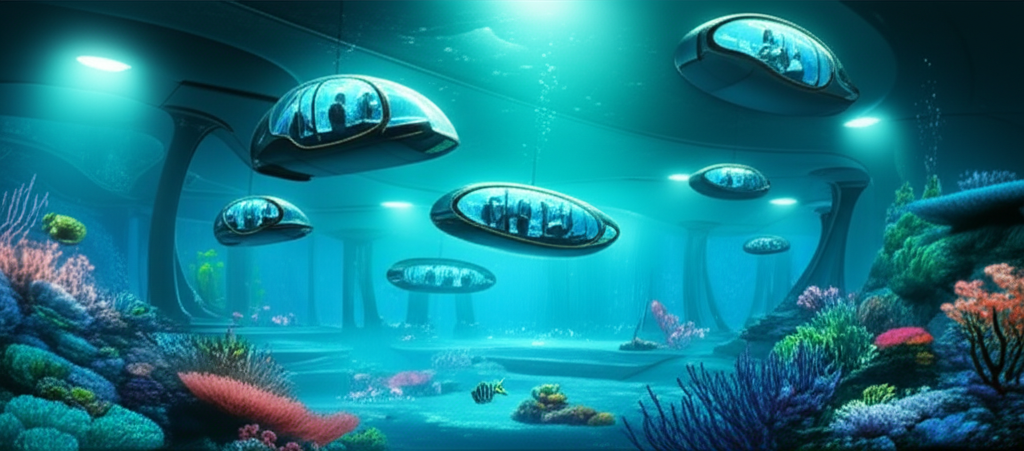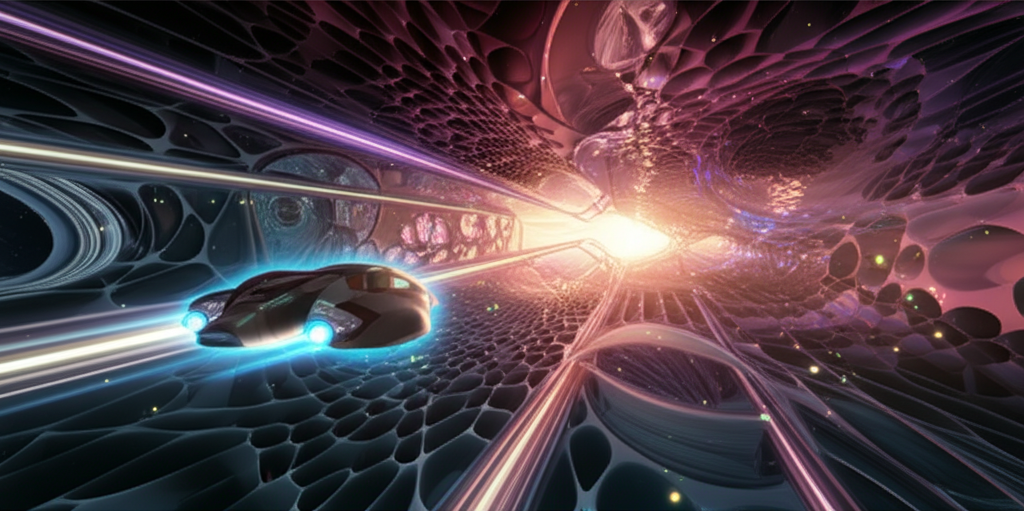Underwater City Transport: Aquatic Highway Systems
Submerged transportation networks connect underwater cities through pressurized tube systems, creating a new frontier for aquatic civilization and marine mobility.

Humanity's expansion into the oceans has created entirely new transportation challenges and solutions. Underwater city transport networks represent the next frontier in human mobility, connecting submerged civilizations through sophisticated aquatic highway systems that operate in the planet's most challenging environment.
Pressurized transport tubes create air-filled corridors beneath the ocean surface, allowing high-speed vehicle travel between underwater cities. These massive tube networks are anchored to the ocean floor and maintained at atmospheric pressure, creating underwater highways that span entire ocean basins.
The engineering challenges of underwater transportation are immense. Transport tubes must withstand crushing ocean pressures while maintaining structural integrity across thousands of miles. Advanced materials including graphene-reinforced composites and self-healing polymers ensure tube networks remain operational despite extreme conditions.
Aquatic vehicles designed for underwater transport feature dual-mode capabilities, operating both in pressurized tubes and open ocean environments. Hydrodynamic designs minimize drag while pressure equalization systems allow seamless transitions between different depth levels and pressure zones.
Propulsion systems use magnetohydrodynamic drives that interact with seawater to generate thrust without traditional propellers. These silent propulsion systems eliminate noise pollution in marine environments while providing efficient movement through both tube networks and open ocean spaces.
Life support systems in underwater transport maintain perfect environmental conditions for passengers during long journeys between distant underwater cities. Advanced air recycling, pressure regulation, and emergency surfacing capabilities ensure passenger safety throughout the transportation network.
Navigation through underwater transport networks requires three-dimensional positioning systems that account for ocean currents, pressure variations, and marine life movements. Quantum positioning beacons provide precise location data while sonar arrays detect obstacles and optimize routing through complex underwater terrain.
Marine ecosystem integration ensures that underwater transport networks coexist harmoniously with ocean life. Bio-compatible materials prevent marine fouling while artificial reef structures incorporated into tube supports actually enhance local marine biodiversity and create new habitats.
Emergency systems include rapid decompression chambers, emergency ascent pods, and underwater rescue vehicles stationed throughout the network. Redundant life support systems and multiple escape routes ensure passenger safety even in the event of catastrophic tube failures or natural disasters.
The expansion of underwater transport networks enables true aquatic civilization, with underwater cities becoming as connected as surface metropolitan areas. This aquatic infrastructure represents humanity's successful adaptation to life beneath the waves, opening vast new frontiers for exploration and settlement.
Related Articles

Quantum Foam Navigation: Traveling Through Spacetime's Smallest Structures
Revolutionary quantum foam manipulation technology enables vehicles to navigate through the fundamental fabric of spacetime itself, accessing transportation networks at the Planck scale.

Psychic Resonance Vehicles: Transportation Through Mental Telepathy
Revolutionary psychic amplification technology creates vehicles that respond to telepathic commands and connect minds across vast distances through quantum consciousness networks.

Nano Swarm Vehicles: Self-Assembling Transportation Clouds
Revolutionary nanotechnology creates vehicles from billions of coordinated nanobots that can form any transportation configuration and adapt in real-time to changing conditions.